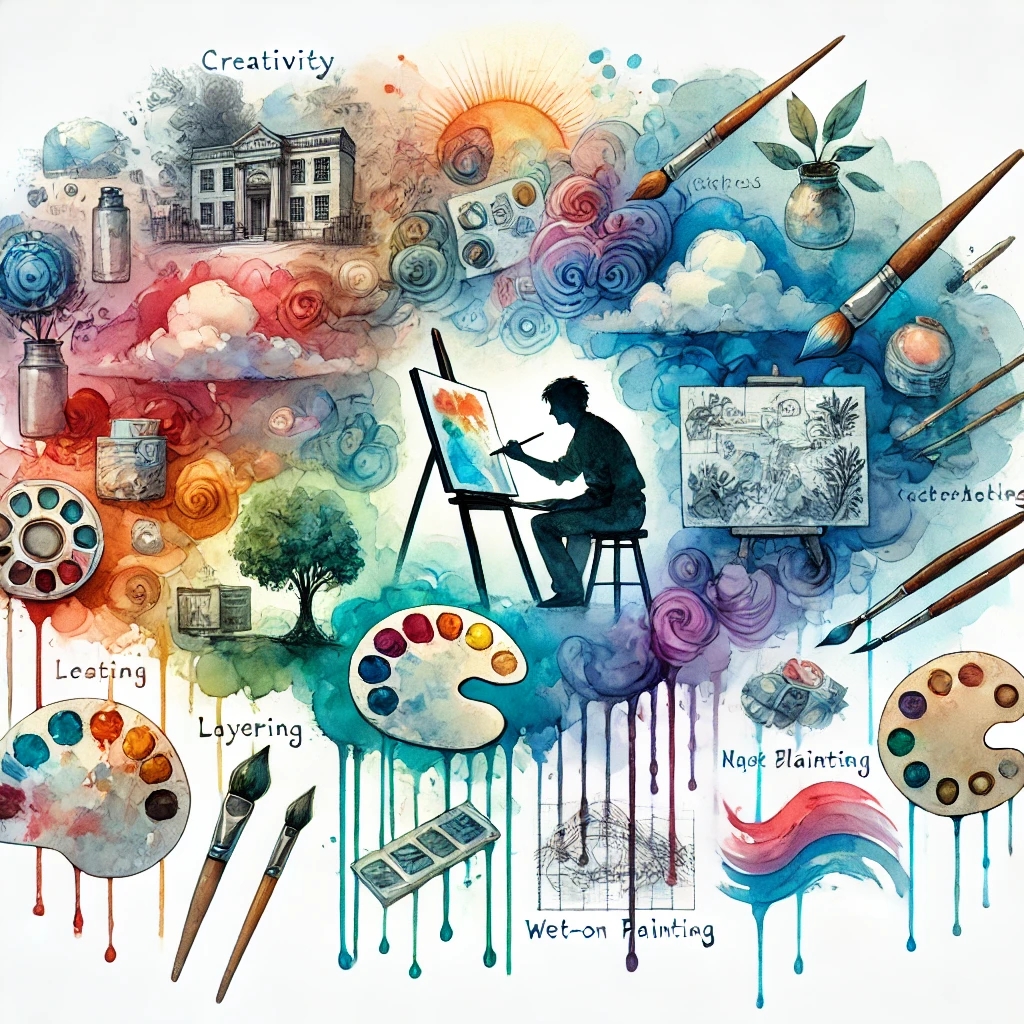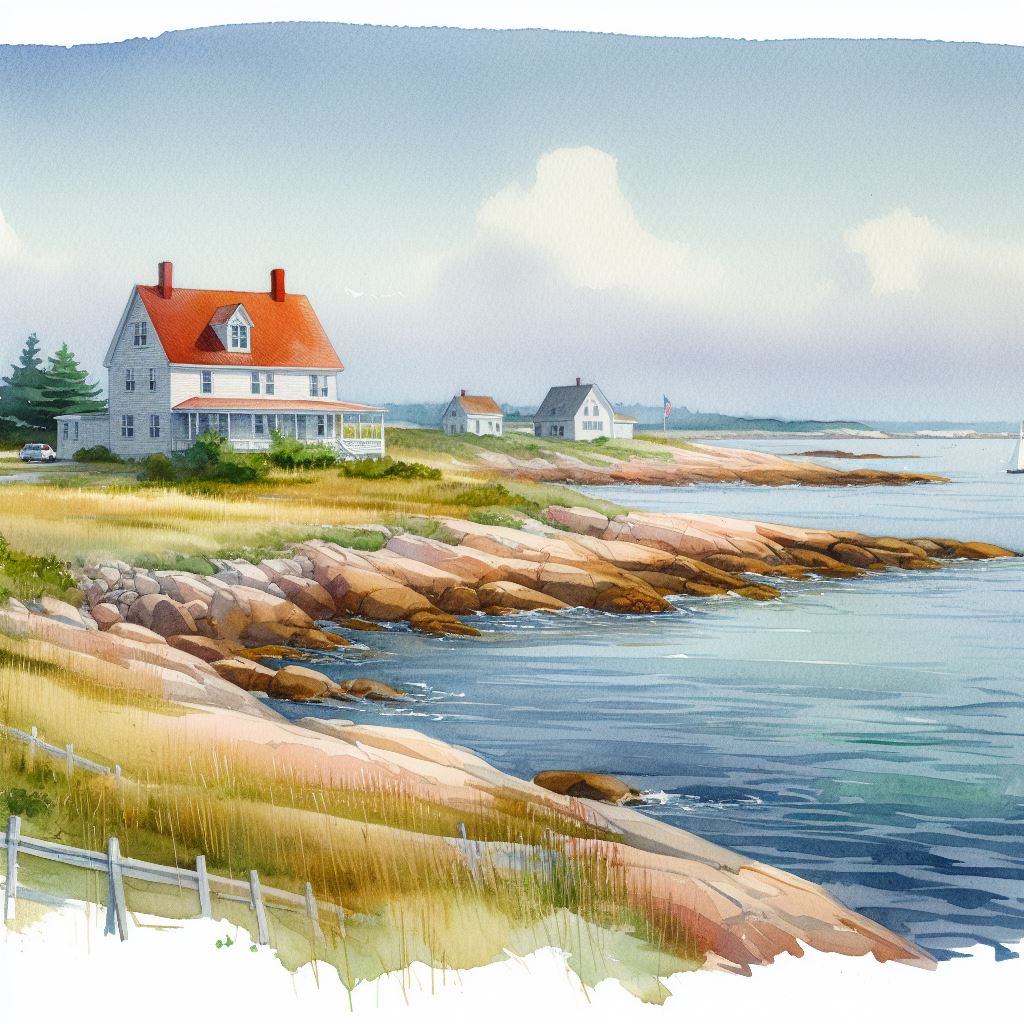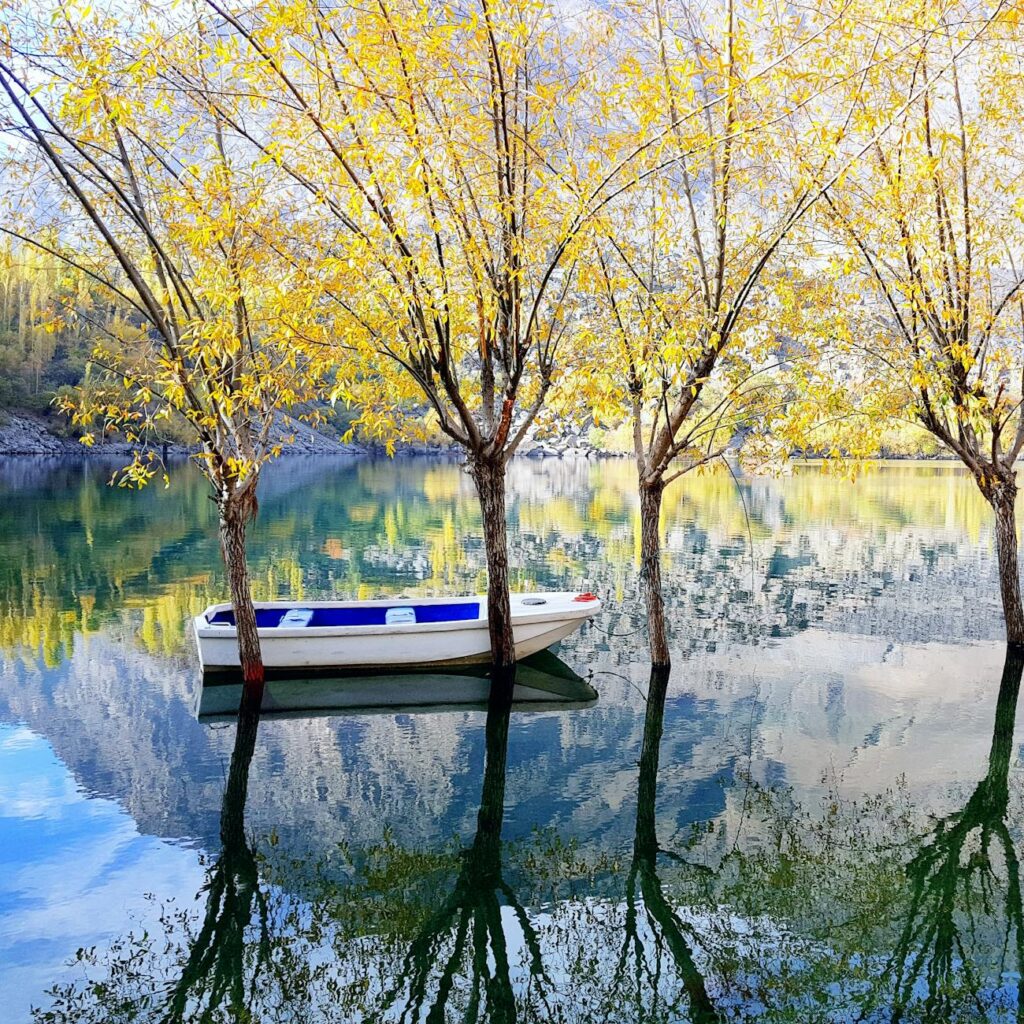Watercolor painting is a captivating art form that combines the fluidity of water with the vibrancy of pigments. Whether you’re just starting or looking to enhance your skills, this comprehensive guide will walk you through essential techniques and advanced methods.
Listen or Download our Podcast on Watercolor Painting Techniques
Getting Started with Watercolor Basics
Essential Materials
- Professional-grade watercolor paints
- Quality watercolor paper (140lb/300gsm)
- Various brush sizes (#2, #6, #10 round brushes)
- Palette
- Water containers
- Paper towels
- Masking tape
- Pencil and eraser
>> Buy your Art Supplies: Biggest Selection of Brands
Understanding Paint-to-Water Ratio
The foundation of watercolor mastery lies in controlling the paint-to-water ratio. A wetter mix creates lighter, more transparent washes, while less water produces more intense colors. Practice creating a value scale to understand these relationships.
Core Watercolor Techniques
Flat Wash
Start with the most fundamental technique: the flat wash. Load your brush generously and paint consistent, even strokes from left to right. Maintain a wet edge to prevent unwanted lines and streaks. This technique forms the basis for skies, backgrounds, and large uniform areas.
Graduated Wash
Create smooth color transitions by gradually adding water to your mixture. Perfect for painting skies or creating depth in landscapes. Work quickly to maintain wetness across the paper, ensuring seamless blending.
Wet-on-Wet
Apply paint to pre-wetted paper for soft, diffused effects. This technique creates:
- Atmospheric backgrounds
- Soft flower petals
- Dreamy landscapes
- Cloud formations
Wet-on-Dry
Paint on dry paper for precise control and defined edges. Ideal for:
- Detailed work
- Sharp outlines
- Textural elements
- Final touches
Intermediate Techniques
Layering and Glazing
Build depth by applying transparent layers of color. Key points:
- Allow each layer to dry completely
- Work from light to dark colors
- Use thin, transparent washes
- Build up color gradually
Color Lifting
Remove paint while it’s wet or lift dry paint using a damp brush. This technique helps:
- Create highlights
- Correct mistakes
- Add texture
- Create clouds or reflections
Negative Painting
Paint around shapes to define them, rather than painting the shapes themselves. This creates:
- Depth and dimension
- Interesting compositions
- Natural-looking foliage
- Complex textures
Advanced Watercolor Methods
Granulation
Embrace the natural separation of pigments for textural effects:
- Use granulating colors like Ultramarine Blue
- Apply on rough paper
- Work with varying amounts of water
- Let gravity assist in pigment settlement
Edge Control
Master the four types of edges:
- Hard edges (wet-on-dry)
- Soft edges (wet-on-wet)
- Lost edges (merging colors)
- Found edges (partially defined)
Texture Techniques
Create visual interest through:
- Salt sprinkles for texture
- Plastic wrap effects
- Spattering
- Dry brush technique
- Sponging
- Scratching
Special Effects and Experimental Approaches
Blooming
Create controlled blooms by:
- Dropping water into wet paint
- Adding concentrated color to wet areas
- Using different timing for various effects
- Controlling water quantity
Masking Techniques
Preserve white areas using:
- Masking fluid
- Wax resist
- White gouache
- Paper reserves
Composition and Planning
Value Studies
Before starting your painting:
- Create thumbnail sketches
- Plan value distribution (establish a clear value hierarchy (light, medium, and dark tones).
- Identify light sources
- Determine focal points
Color Harmony
Develop cohesive paintings through:
- Limited color palettes
- Complementary colors
- Split-complementary schemes
- Analogous combinations
Common Challenges and Solutions
Avoiding Muddy Colors
- Mix colors deliberately
- Use clean water
- Limit color combinations
- Allow layers to dry
Maintaining Freshness
- Work quickly when needed
- Plan your approach
- Preserve white space
- Avoid overworking
Tips for Continued Growth
Practice Exercises
- Daily color mixing studies
- Quick sketches
- Value studies
- Technique sampling
Subject Matter Progression
- Simple still life
- Landscapes
- Florals
- Portraits
- Complex compositions
Inspiration to use Watercolor Painting Techniques
Artists who mastered watercolor painting techniques:
| Artist | Techniques Mastered |
|---|---|
| Winslow Homer | – Saturated washes of color – Brilliant depiction of light on water – Unique viewpoints and compositions |
| John Singer Sargent | – Expressive brushwork – Preserving white of the paper – Capturing light and atmosphere – Direct approach with loaded brush |
| Paul Cézanne | – Simplifying forms into geometric shapes – Focus on still lifes, portraits, and landscapes |
| J.M.W. Turner | – Expressive coloring – Imaginative landscapes – Turbulent marine paintings |
| Vincent Van Gogh | – Emotional expression through color – Unique brushwork style |
| Paul Klee | – Influence of expressionism, cubism, and surrealism – Individualistic style |
| Edward Hopper | – Capturing specific moments and atmosphere – Preserving white of the paper – Balancing warm and cool light |
| Albrecht Dürer | – Finely rendered surfaces – Detailed nature studies |
This table showcases some of the most renowned watercolor artists and their signature techniques. Each artist brought unique contributions to the medium, pushing its boundaries and demonstrating its versatility. From Homer’s saturated washes to Sargent’s expressive brushwork, these techniques have influenced generations of watercolor artists and continue to inspire contemporary painters.
Conservation and Care
Protecting Your Work
- Use archival materials
- Store paintings flat
- Avoid direct sunlight
- Frame with UV protection
Maintaining Supplies
- Clean brushes thoroughly
- Replace water frequently
- Store paints properly
- Protect paper from humidity
Final Thoughts
Watercolor painting is a journey of continuous discovery and improvement. Each technique builds upon the last, creating a foundation for artistic expression. Remember that mastery comes through patient practice and experimentation. Embrace the unpredictable nature of watercolors while developing control over the medium.
The most successful watercolor artists combine technical skill with creative freedom, allowing the medium’s natural properties to enhance their work. Whether you’re painting loose, expressive pieces or detailed botanical illustrations, these techniques will serve as building blocks for your artistic journey.
Keep exploring, practicing, and most importantly, enjoy the process of creating with this versatile medium. Your unique approach to these techniques will help develop your personal style and artistic voice.



